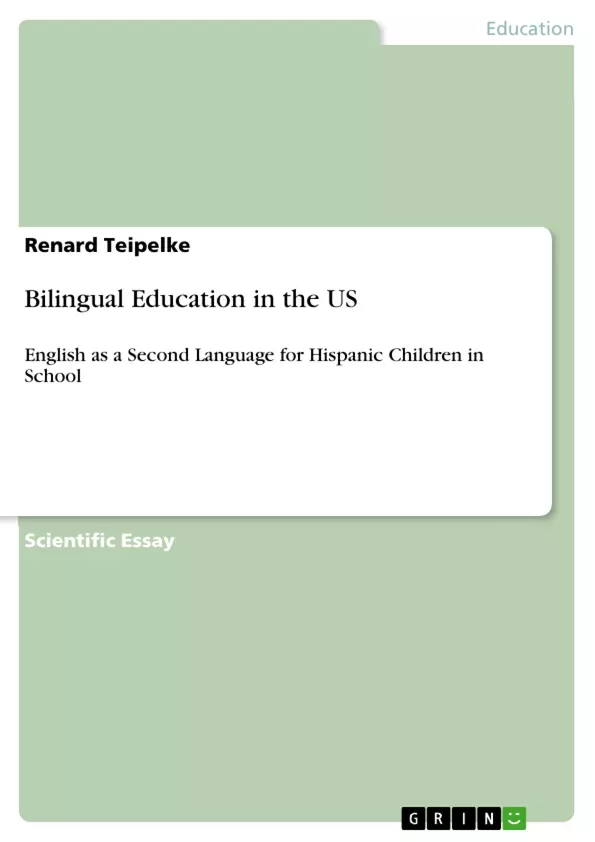On the introductory historical basis, the role of bilingual education, with focus on English as a second language for Hispanic children in school, will be presented in this paper. After a theoretical introduction, I examine the arguments for and against the bilingual education by balancing previous research on this issue. Then I will analyze the problems in this field and the language legislation in the US. For a better understanding of the importance of bilingualism in the US, I will refer to the interest groups, the differences between the states, and to the issue of identity. To conclude, I will focus on English and Spanish as world languages and try an outlook on the future of the multicultural US.
Table of Contents
- The History of Bilingualism in the US
- Bilingualism
- Definition of Bilingualism
- Reasons for Hispanics to Learn English as a Second Language (ESL)
- Bilingual Education
- Goals of Bilingual Education
- English Immersion
- English as a Second Language
- Cultural Maintenance
- Bilingual Education Instead of English Immersion
- Vantages
- Disadvantages
- Problems
- The Actual State of Affairs
- Outlook: English and Spanish as World Languages
Objectives and Key Themes
This research paper investigates the historical development of bilingualism in the US, focusing on English as a Second Language (ESL) education for Hispanic children. It aims to examine the various arguments surrounding bilingual education and its potential benefits and drawbacks.
- The historical development of bilingualism in the US
- The role of English as a Second Language for Hispanic children
- Arguments for and against bilingual education
- The impact of language policies on bilingual education
- The role of English and Spanish as global languages
Chapter Summaries
The paper begins by exploring the historical context of bilingualism in the US, highlighting the ongoing tension between the country's growing diversity and its prevailing monolingualism. This chapter discusses the various waves of immigration and the evolving language policies throughout US history. Chapter two delves into the concept of bilingualism, distinguishing between individual and social bilingualism, and instrumental and integrative bilingualism. It also examines the reasons why Hispanics choose to learn English as a second language, including political, economic, and social motivations.
Chapter three explores the goals and methods of bilingual education, focusing on the debate between English immersion and bilingual education programs. It introduces key interest groups, including the English-Only-Movement and its proponents, and examines the different approaches to language acquisition in schools. Chapter four delves into the advantages and disadvantages of bilingual education compared to English immersion, exploring the potential benefits of multilingualism and the challenges associated with its implementation.
The paper concludes by analyzing the current state of bilingual education in the US, and discussing the future of English and Spanish as world languages in a multicultural society.
Keywords
The paper focuses on the concepts of bilingualism, language policies, educational approaches, and the cultural impact of bilingualism in the US. Key terms include English as a Second Language (ESL), English immersion, bilingual education, Hispanic children, cultural maintenance, and assimilation. It also explores the role of language in shaping identity and the ongoing debate surrounding English-only policies in the US.
- Quote paper
- Renard Teipelke (Author), 2008, Bilingual Education in the US, Munich, GRIN Verlag, https://www.grin.com/document/131112



